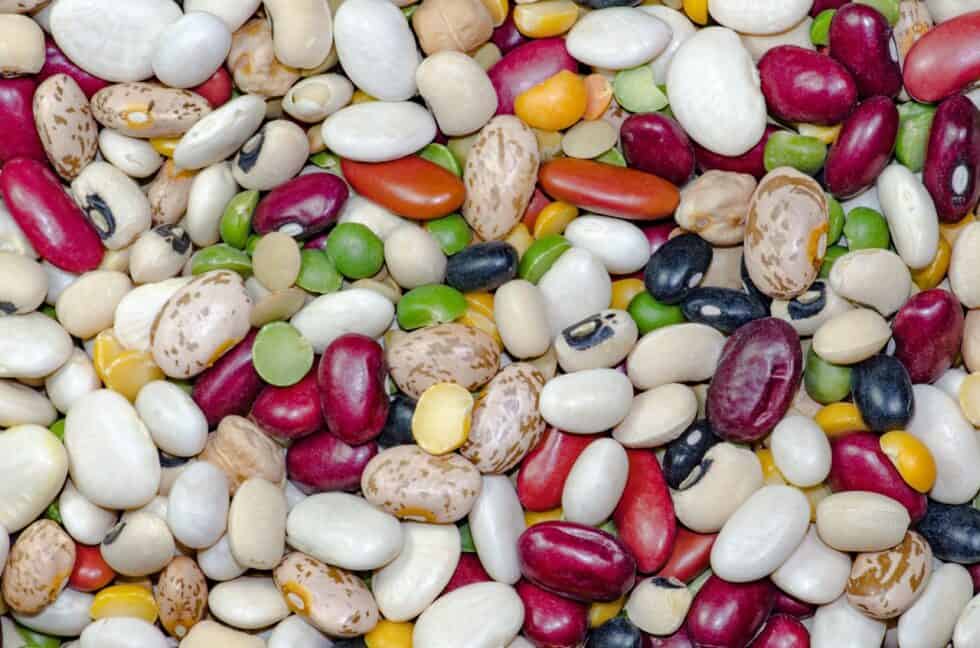
are beans truly Instagram-worthy?
Are beans Instagram-worthy?
As much as I appreciate good food porn, I admit to feeling that part of the reason Americans no longer cook from scratch is that we feel “less than” if every meal doesn’t look Instagram-worthy.
I’m admitting right now that most of my meals are not unless you love pictures of really simple home cooking. (Yes, Chuk Nowak made my food look beautiful for Fl!p Your K!tchen—and I don’t normally take so much time styling it when I serve it!)
That’s why this article made me chuckle. It’s even funnier if you look at what the title of the browser tab says: “Bean Buyers Remorse: It’s Real.” I wonder why the title was changed…?
beans, beans, they’re good for your heart
(If you are not familiar with where my subheading are coming from, ask any elementary-school-aged child for the next lines.)
For a great explanation of the health benefits of beans, check out Dr. Michael Greger’s work on the Nutrition Facts site.
Forget all those expensive superfoods, such as coconut oil, açai berries, quinoa, etc.: beans are good for a lot more than your physical health, they are very inexpensive, grown in many states, and—especially when bought in bulk—don’t come with all the packaging.
If you’re working toward a whole, SOLE food diet, beans are a true superfood:
- They’re dried at the peak of ripeness, making them seasonal no matter when you cook them.
- Many organic options exist.
- They are a domestic product, perhaps even locally-grown—in Michigan, where I live, beans are a large part of the overall agriculture sector.
- Because they are a domestic product, there’s some small assurance that those who grow, pick, pack, and transport are earning a decent wage. Of course, the beans may be picked by migrant workers, which is a difficult issue to circumvent and perhaps a compromise we might have to make.
beans, beans, the musical fruit
“But I can’t eat beans because they, um, well, you know … cause gastric distress!”
If you don’t eat beans for this reason, take heart! Most people can eat them without any problems if they observe a few simple rules:
- Cook them at home from scratch—pressure cookers and instant pots are optional. In fact, for best results, cook them the truly traditional way: slowly, after a long soak, and with herbs and spices that minimize their gas-inducing qualities. (Just because they cook low and slow doesn’t mean you have to hover over the stove–set your timer, and you can walk away for 30 minutes or more. You can find my recipe for them here.
- Start with the tiniest varieties: lentils are a good place to begin, and an added bonus is that if you soak them ahead of time, they can cook in as little as 10–15 minutes! Note that red lentils tend to turn soupy when cooked; brown and green lentils retain their shape better for using in recipes other than soup. Gradually increase the variety/size: small beans include azuki/adzuki, mung, and black beans. Medium varieties include navy, pinto, and red chili beans. Large beans include chickpeas/garbanzos, limas and kidney beans.
- Start with small amounts: don’t jump right to eating a cupful three times a day! Begin by adding beans to salads, pastas, and casseroles—1/2 cup at the most to begin with, every few days. Work up to eating 1/2 cup once a day, then even 1/2 cup at two or more meals per day.
- Chew thoroughly: digestion begins in the mouth with our jaws breaking the beans up physically and the enzymes in our saliva starting to break them up chemically so they can be more easily digested further down the digestive tract.
In fact, there are some Instagram-worthy beans—for example the beautiful cranberry limas on the original cover of Barbara Kingsolver’s Animal, Vegetable, Miracle, possibly one of my favorite food books ever by my favorite author!
make the connection
Start incorporating more beans in your diet! Try cooking them from scratch, and if that really isn’t possible, look for low- or no-sodium cooked beans: look for BPA-free cans or cardboard Tetra Paks.
Leave me a comment and let me know: If you cook beans from scratch, what are your tips for doing so, and what are your favorite ways to eat beans?



